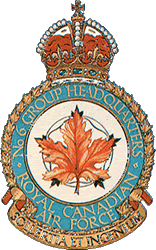
F/Sgt J. Harty -- 408 Squadron
While on operations to Turin on February 4/5,1943, Halifax II HR-655
coded EQ-S, flown by F/Sgt J. Harty from 408 Squadron was attacked by what
was thought to be a JU-88.
Sgt Taylor, the mid upper gunner, sighted
the enemy aircraft after leaving the target at position 45:49N-05:44E,
at 10,000 feet, 155 mph at 22:35. The visibility was good with 5/10ths
cloud at 2,000 feet. The mid upper gunner sighted the enemy aircraft
on the port quarter up at 400 yards range. The enemy aircraft made an attack
from the port quarter up, Sgt Taylor gave the pilot instructions to “turn
port and dive” and opened fire on the enemy aircraft at 300 yards range,
giving 3 bursts with a total of 200 rounds, no damage was observed. The
enemy aircraft did not open fire and broke away on the starboard quarter
down at a range of 50 yards. There was slight search light activity, though
it didn’t seem to co-operate with the fighter in any way. The enemy aircraft
carried no identification lights.
Sgt J. Rivard -- 425 Squadron
Wellington III BJ-652 coded KW-E flown by Sgt J. Rivard from 425 Squadron,
when on the homeward journey from Lorient, encountered a JU-88. They were
flying at 12,000 feet, 145 mph, heading 359 degrees at position 49:15N-03:05W.
Visibility was poor when the JU-88 was seen just above white clouds on
the same heading, 600 yards astern, climbing towards the Wellington.
The enemy aircraft opened fire with a short burst at 450 yards, which Sgt P. Boileau, the rear gunner, replied with a short burst. When the JU-88 was at 400 yards it broke away below on the starboard quarter, then appeared a minute later on the port quarter and opened fire at 450 yards. The rear gunner replied with 2 short burst at 400 yards.
The enemy aircraft broke off below on the port quarter. The third attack was similar to the second with the rear gunner firing a short burst. The enemy aircraft broke away astern diving into the clouds and appeared to engage another aircraft about a mile behind, as tracer was seen flying through the air.
There was no search light activity. During this attack, corkscrewing
was used as evasive tactic.
![]()